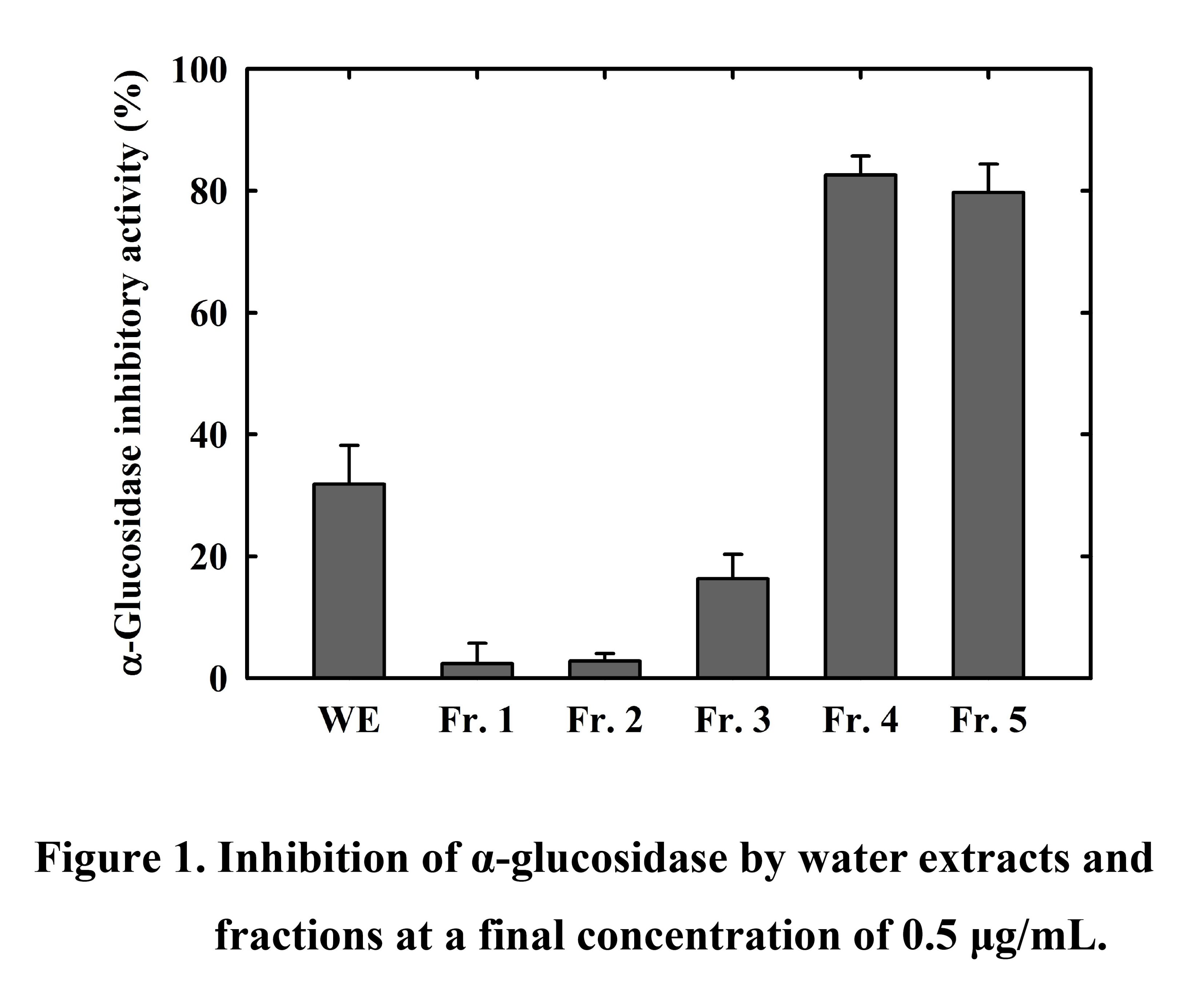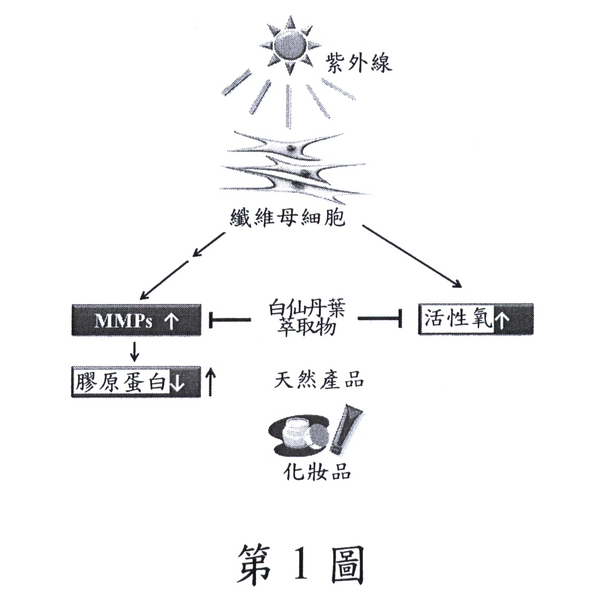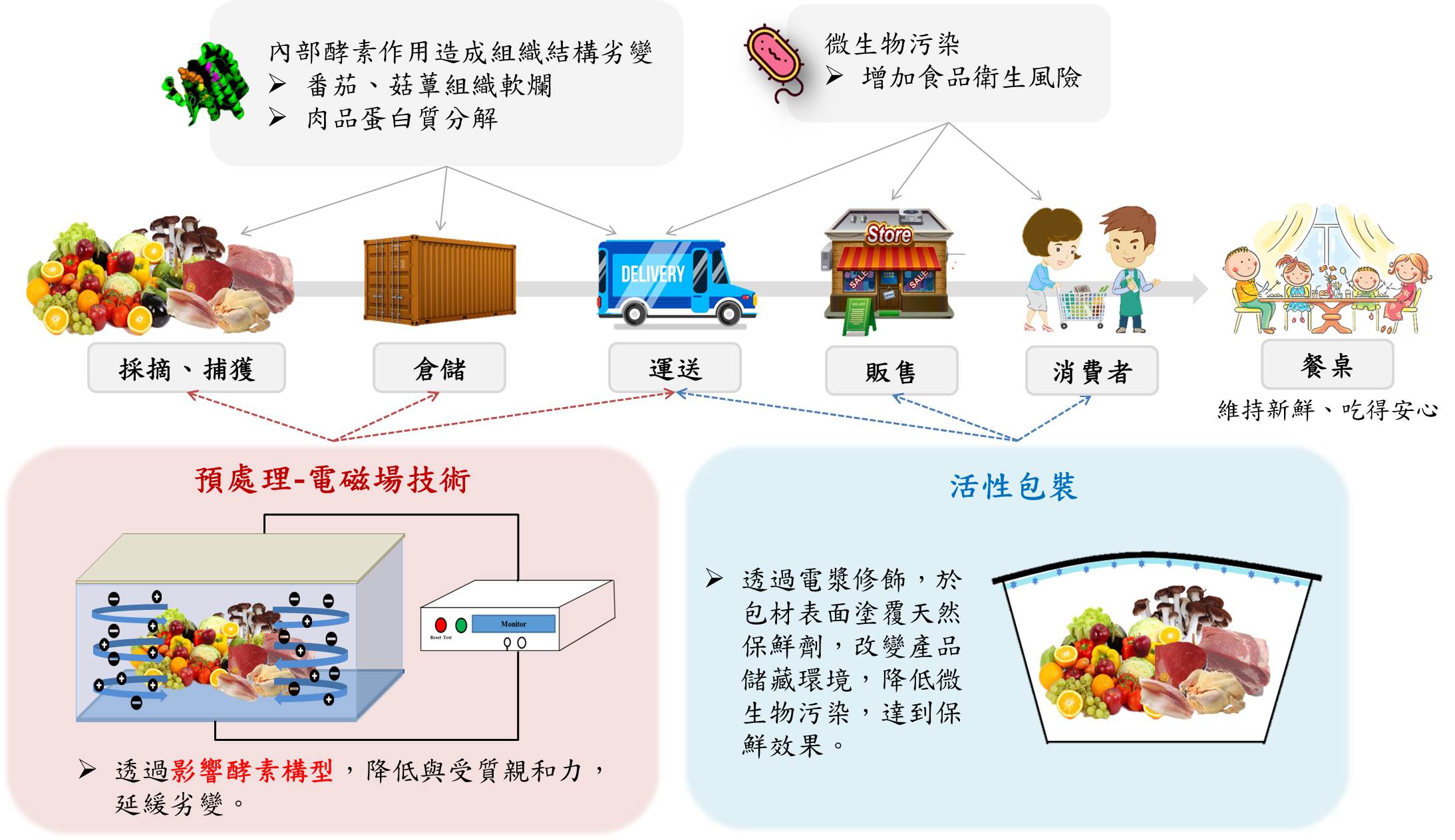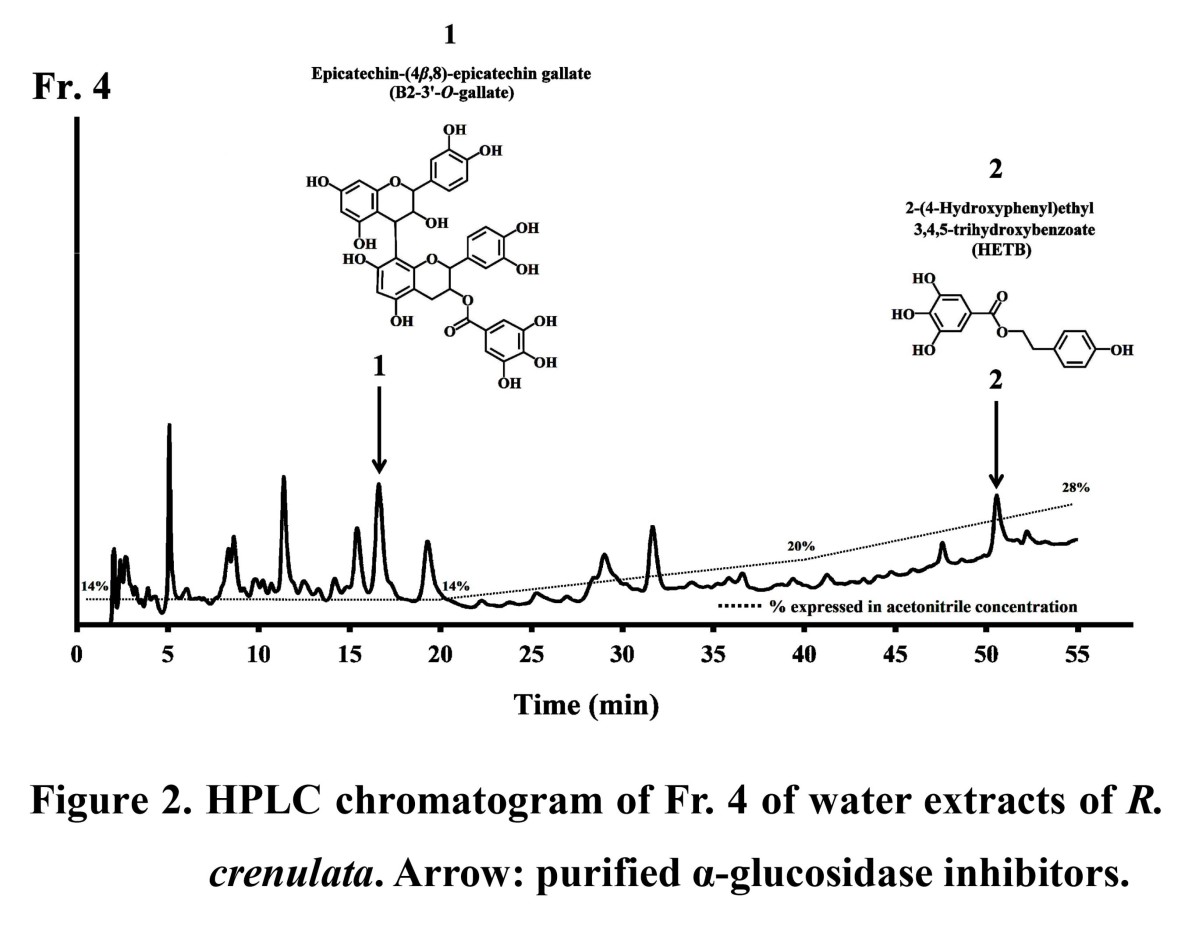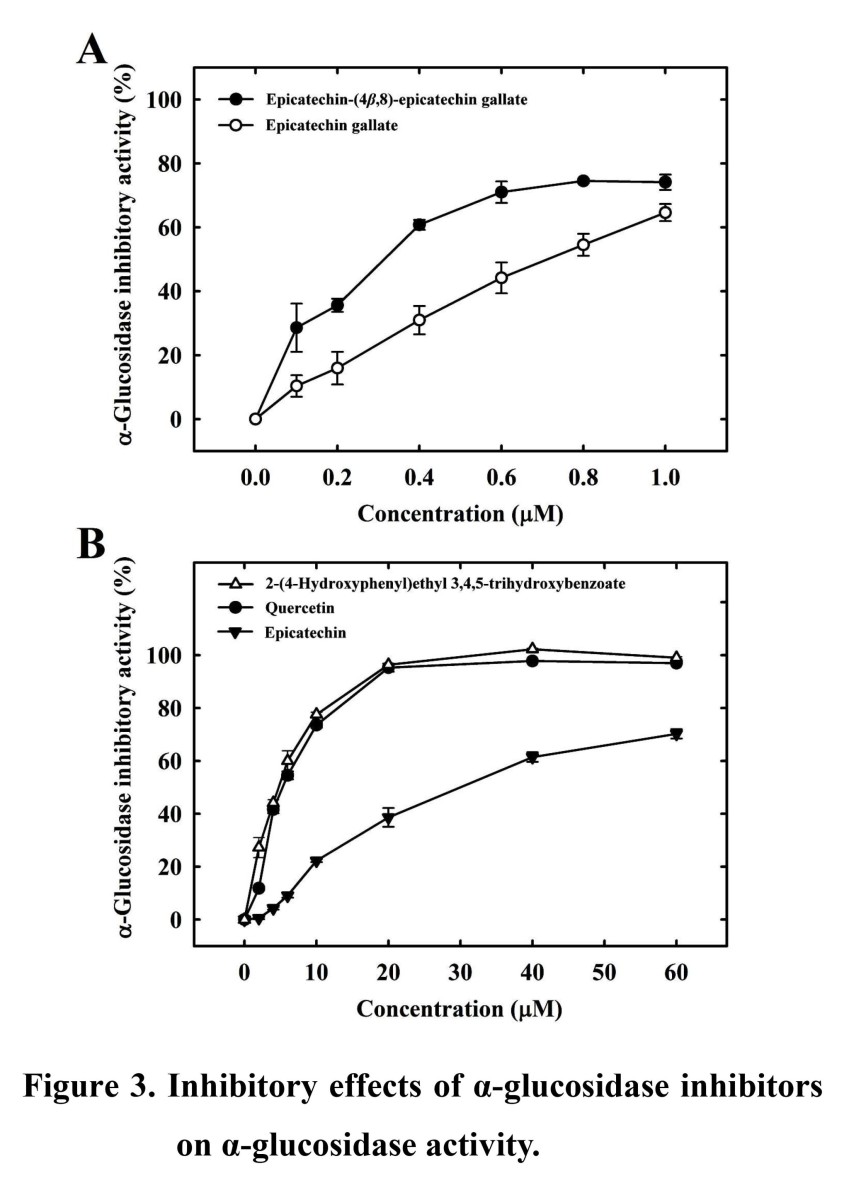| Technical Name | USE OF RHODIOLA CRENULATA EXTRACTS IN MANUFACTURING COMPOSITIONS WITH HYPOGLYCEMIC EFFECT | ||
|---|---|---|---|
| Project Operator | FuJen Catholic University | ||
| Summary | This technique is to produce hypoglycemic substances from Rhodiola crenulata extract for hypoglycemic drugs, health supplements, and other applications in relevant industries. The hypoglycemic substances from Rhodiola crenulata extract, which include epicatechin-(4β,8)-epicatechingallate (B2-3’-O-gallate) and 2-(4-hydroxyphenyl)-ethyl 3,4,5-trihydroxybenzoate (HETB) that with the α-glucosidase inhibition activity. |
||
| Scientific Breakthrough | This technique is to produce hypoglycemic substances from the root of Rhodiola crenulata for hypoglycemic drugs, health supplements, and other applications in relevant industries. The procedure of the technique is as follows: 1. The root of Rhodiola crenulata was extracted with distilled water to obtain a water extract, dissolve the water extract in a suitable amount of distilled water, apply it to a solid-phase extraction column, perform elution using 0-40% methanol, collect eluates from different fractions, and then condense and lyophilize the eluates. This produces fraction samples eluted using different concentrations of methanol. 2. Dissolve the fraction sample with the best α-glucosidase activity inhibition effects (82.6%) in an appropriate amount of distilled water, apply it to an HPLC column for gradient elution, and test the α-glucosidase activity inhibition effects of the collected eluates. This test identifies the Rhodiola crenulata extracts that can inhibit α-glucosidase activity. 3. The compounds with the best α-glucosidase activity inhibition effects in the Rhodiola crenulata extracts are epicatechin-(4β,8)-epicatechingallate (B2-3’-O-gallate) and 2-(4-hydroxyphenyl)- ethyl 3,4,5-trihydroxybenzoate (HETB). Therefore, this technique is to produce hypoglycemic substances (active ingredients B2-3’-O-gallate and HETB, which can inhibit α-glucosidase activity) from Rhodiola crenulata extract for hypoglycemic drugs, health supplements, and other applications in relevant industries. |
||
| Industrial Applicability | 本技術以降血糖為主要功效訴求,以目前相關專利的產業應用而言,應用於降血糖或治療糖尿病領域較多,顯示本技術應用範圍以調節血糖食品及抗糖尿病藥物為主。因此,本技術組成物可調製成食品、飲品或藥品之型式。可依任何習知技術配合常用的食品、飲品賦形劑或填充劑等,及視需要的添加物混和調製而成食品、飲品型式之產品。亦可依一般醫藥上常用之技術或方法,含有醫療有效量之本發明組成物,佐以醫藥上可接受之載劑調製成藥品。 |
||
other people also saw

